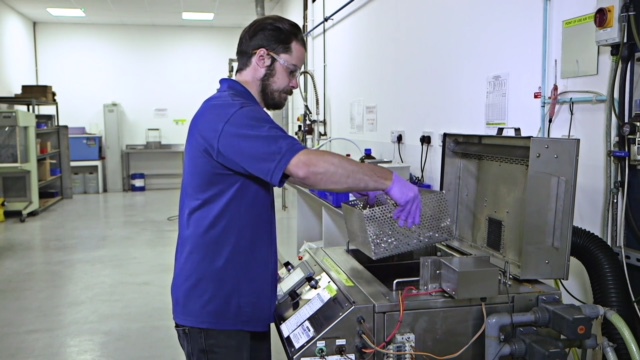

|
Edward Lowton
Editor |


|
| Home> | Production Engineering | >Training | >Passivation explained and demonstrated |
Passivation explained and demonstrated
03 October 2018
A video from William Hughes features the passivation process facility at the company’s headquarters in Dorset. NADCAP accredited and Honeywell Aerospace approved, the video explains how passivation can be used to remove exogenous iron or iron compounds left behind on the surface of stainless steel as a result of machining and fabrication processes.

To view the video, simply enter “Passivation William Hughes” into YouTube or follow the link: https://www.youtube.com/watch?v=6QlBWYUVS8s"
The William Hughes passivation plant is fully automated and PLC controlled. Once the component basket is placed in position, there is no manual ‘dunking’ of components from station-to-station, as with traditional systems. Instead the plant performs ‘fluid transfer’, moving chemical solutions from holding tanks into the main processing unit as required. This prevents damage to the parts as they are not required to move.
Typical treatments feature nitric acid/sodium dichromate and rinse cycles followed by a further rinse in deionised water before the parts are placed in a drying cell.
Other innovative plant functionality includes an ultrasonic passivation facility and a rotary option where parts can be rotated through the solution, thus filling air gaps in more complex and tubular-type components, for example.
- Wire service
- Protecting parts during storage and transportation
- Coiled and ready for action
- Spring solutions
- Celebrating success in Bulgaria
- William Hughes boxes clever with spot welded assembly
- Springs meet demands of aerospace applications
- Clean bill of health
- Complex wire manufacture
- Bulgarian growth

















